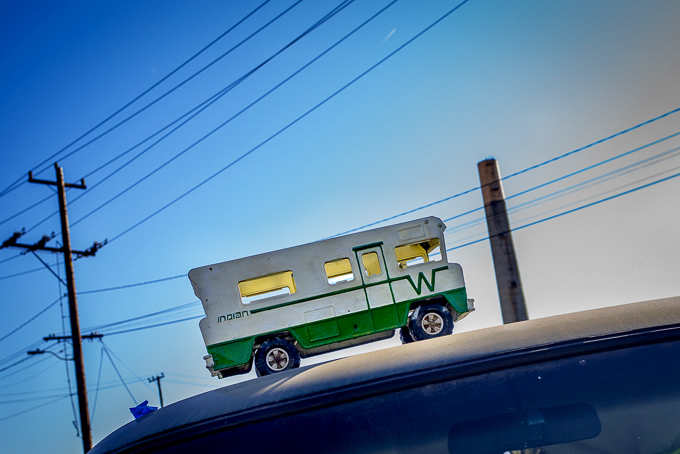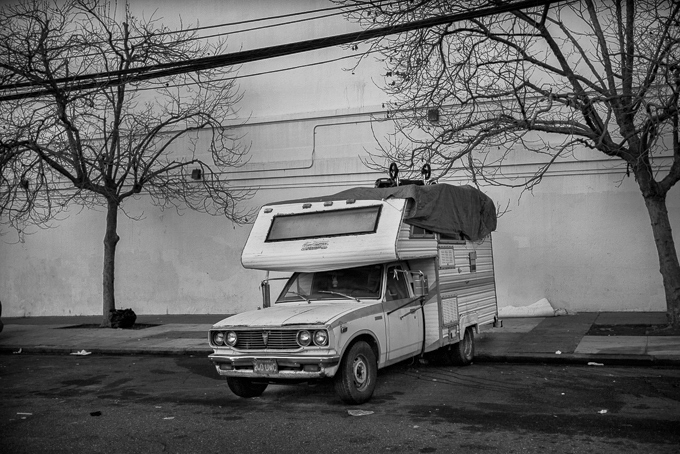“The Wandering Habit” — Two Cheers For Nomadland
By Hardy Green
She called them “the suitcase crowd.”
It was while working as a secretary in the Memphis public schools, beginning in the 1960s, that my mother became acquainted with a frequently moving slice of humanity.
One of her duties at the school was to register incoming students, particularly those who appeared not on the first day of school but later, in the middle of a term perhaps. Some of these late-arriving students might show up in mid-November and then one day disappear, only to reappear sometime in the spring. Generally, they resided for a period at a nearby public housing project. What caused them to come and go? Probably their parents’ uncertain employment, perhaps talk of opportunity elsewhere combined with what some historians of southern textile-mill villages have termed “the wandering habit”—a tendency of formerly rural people to pick up at a moment’s notice and move away.
When I first heard about the film Nomadland, I thought it must concern “the suitcase crowd.” And maybe that’s right: The availability or unavailability of work does induce Fern—the character played by actress Frances McDormand—and her chums to move about. But Fern’s group seems a little less down-and-out—and a little more Age of Aquarius-inspired—than I recall my mother’s “suitcase crowd” as being.
As the movie awards season approaches its climax with the late-April Academy Awards, we’ll be hearing more and more about Nomadland. And that gives me pause. There’s lots to like about the picturesque, often touching film—and certain things to question, particularly the very positive image of work at Amazon.
What first prompts Fern’s roaming is the 2011 closure of U.S. Gypsum’s mine and sheetrock factory at the company town of Empire, Nevada, where her husband had worked. Employees and their families were permitted to continue living in their company-owned homes for only five months after the closure. Then, Empire became a ghost town and even its zip code gotdiscontinued.
Thereafter, we see Fern taking on various stints of work and long drives in her camper van. She has gigs at an Amazon warehouse, at a national park, and at a beet processing plant. She wanders around Badlands National Park in South Dakota and, in deepest winter, hangs out with other migrant van dwellers at the real-life Rubber Tramp Rendezvous at Quartzsite, Arizona, which every year draws thousands of attendees.
The movie was inspired by a book of the same name by journalist Jessica Bruder. That account covered five years and interviews with some 50 aging post-recession refugees from the middle class and working class. They include a former long-haul truck driver and taxi drivers, McDonald’s and software company executives, an IRS phone representative, and a chain store cashier.
To call these people nomads is a misuse of the term. “The word nomad derives from the Greek nomos—a pasture,” travel writer Bruce Chatwin informs us in his essay “Nomad Invasions.” “A nomad proper is a mobile pastoralist, the owner and breeder of domesticated animals…. Nomads never roam aimlessly from place to place, as one dictionary would have it. A nomadic migration is a guided tour of animals around a predictable sequence of pastures.”
Chatwin also tells us that nomads, with their grazing animals, and farmers, with their crops, live in a symbiotic relationship, exchanging hides, meat, and dairy products for grains and vegetables. In like manner, the wanderers of Nomadland depend upon stable capitalist outposts including Amazon. But these “nomads” have no animal products to trade—only their labor power.
Perhaps coincidentally—and perhaps not—Amazon has been in other news lately due to a unionization vote at a warehouse in Bessemer, Alabama. (That’s another former company town; you really can’t get away from them in working-class America.) The union drive featured reports of denied bathroom breaks and repetitive-stress injuries due to workers’ slogging around heavy boxes for hour after hour.
In the movie, we see Fern and her co-workers performing these tasks at a similar Amazon “fulfillment” center. But the work seems far from hellish: At one point, we see McDormand casually walking a package from one area of the warehouse to another. And later when questioned about how she’s getting along economically, she reports that Amazon’s good pay is key to her survival.
Perhaps there can be a sequel in which Fran develops back trouble and can no longer endure long drives in her van. Nomadland has been praised for its use of non-professional actors including true-life itinerants. But a more true-life picture would examine just why unionization became an issue at the Bessemer warehouse. Life for “the suitcase crowd” is a long way from that of the jet set.
…


Pingback: A Journal of the Plague Year 2021–chapter 208 – Hardy Green